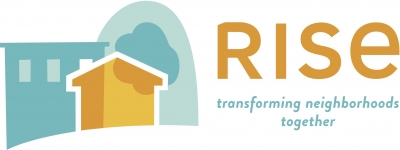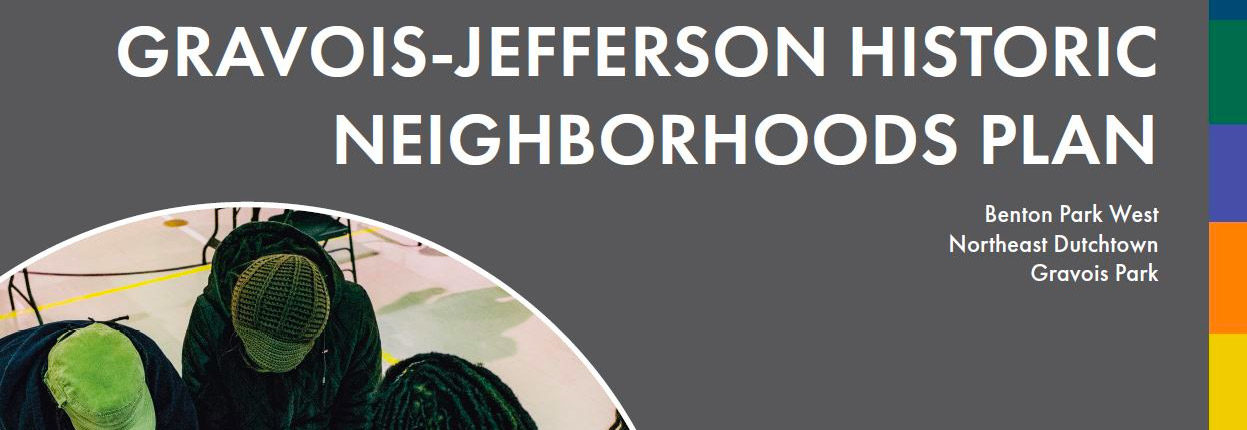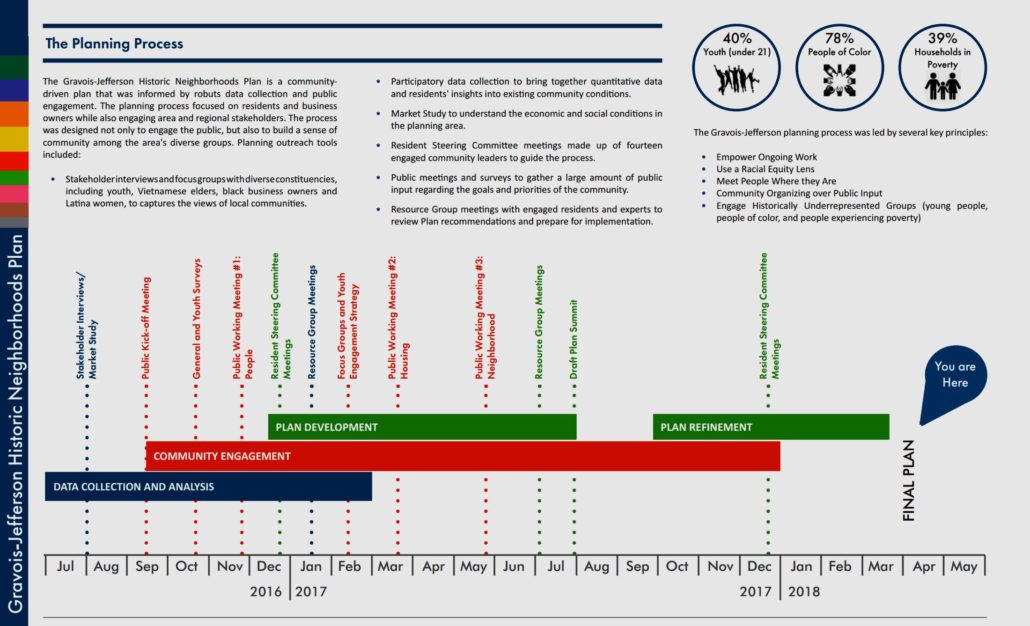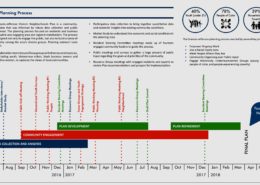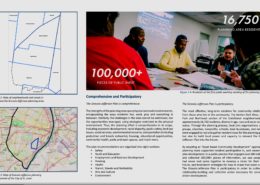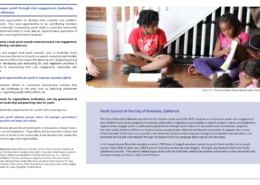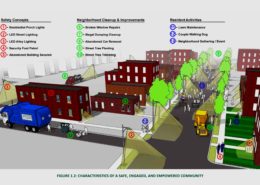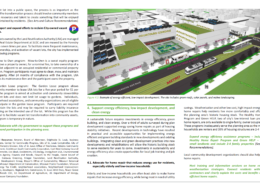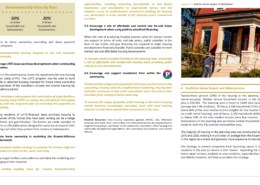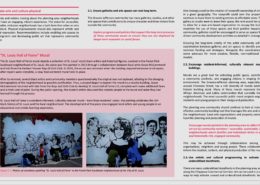On May 2nd, 2018, the City of St. Louis Planning Commission unanimously adopted the Gravois-Jefferson Historic Neighborhoods Plan as an amendment to the City’s Comprehensive Plan, making it among the few areas in the City to achieve this designation. With its formal adoption, the Gravois-Jefferson Historic Neighborhoods Plan will guide municipal zoning and redevelopment decisions. The Planning Commission adopts zoning ordinances, makes decisions on all rezoning petitions, reviews blighting studies and redevelopment plans, and provides recommendations to the Board of Aldermen. The Commission will refer to the Gravois-Jefferson Plan for any proposal that falls within the geography of the planning area.
Over the past two years, more than 700 people came together in recreation centers, schools, local businesses and churches to develop a plan for the future of Benton Park West and Gravois Park, as well as portions of Dutchtown and Mount Pleasant. 100,000+ pieces of public input informed over 300 recommendations designed to contribute to the community’s vision:
…accessible, sustainable, inclusive neighborhoods where families and individuals thrive in a diverse and historically rich, engaged community.
Recommendations span eight focus areas, organized in order of importance to the community: safety; youth and education; employment and business development; housing; health; transit, streets, and walkability; arts and culture; and environment.
Background
In 2015, Rise Community Development identified these neighborhoods as a priority area for attention and investment. Rise, in partnership with Lutheran Development Group, is responsible for over $15,000,000 of real estate and commercial development in the planning area. Projects include the recently opened EAGLE Prep School and Intersect Arts Center, as well as Chippewa Park, which is currently under construction. These developments represent the rehabilitation of 18 historic buildings into 46 units of affordable housing, three commercial spaces, an elementary school and a community arts center. As we worked with local partners on these projects, the need for a comprehensive neighborhood plan and vision became apparent.
In July 2016, Rise began the process of convening stakeholders and local leaders to launch a planning process. Shifts in market demand, major development opportunities, and community interest created opportune timing for a renewed planning effort. Below average home sale prices and high levels of vacancy rendered the area vulnerable to unplanned, inequitable development, yet poised for highly coordinated, comprehensive planning. Thus, the Gravois-Jefferson Historic Neighborhoods planning effort was born. The Gravois-Jefferson planning team consisted of Rise Community Development, Dutchtown South Community Corporation (DSCC), UrbanWerks Architecture and Design, and Development Strategies.
The Gravois-Jefferson Plan and Community Engagement
Data gathered by Rise’s in-house data management division show that the planning area is home to some of the densest, most diverse and youthful neighborhoods in the St. Louis region, with a population comprised of 78% people of color and 40% youth under 21. They are also among the City’s poorest neighborhoods, with 39% of households living in poverty and a median household income of $24,500. The median household income for the City of St. Louis is $35,700. The Plan necessarily addresses topics beyond building height and street design. Among the recommendations in the Plan: supporting and diversifying neighborhood and block captain groups, investing in youth jobs programs, incentivizing mixed-income and mixed-use development, and advocating for more frequent transit service.
Rise and DSCC took a unique approach to engaging groups historically underrepresented in community planning processes. With the intention of engaging young people, people of color, and people in poverty, we traveled to local high schools to conduct participatory mapping, visited area churches with surveys translated into Spanish and Vietnamese, and hosted roundtables of black business owners and Latina women. We also rallied dozens of volunteers to conduct a survey for every piece of land in the planning area – over 5,000 parcels! The public engagement process consisted of six public meetings, eight resident steering committee meetings, hundreds of surveys, thousands of website visits, and countless conversations and focus groups.
Implementation
Implementation of the Gravois-Jefferson Historic Neighborhoods Plan is already underway. Dutchtown South Community Corporation, applying specifically for the implementation of the Gravois-Jefferson Plan, was selected as an Invest STL awardee. DSCC will receive technical and financial support over three years to oversee the implementation of the Plan. Additionally, construction along the Chippewa corridor recently began on developments led by Rise, Lutheran Development Group, Southside Spaces and other area developers. Finally, residents and community organizations are working every day to make their neighborhoods better places to live; they were implementers before the planning process began and will continue to play essential roles in the implementation of the Gravois-Jefferson Historic Neighborhoods Plan.
I want to express my deepest thanks to everyone who was a part of this process. Comprehensive, community-based planning processes have the ability to spark new relationships, catalyze investment, shape neighborhoods for years to come. I am thrilled to say that Rise is moving toward having planning processes such as these be a part of the services we offer the St. Louis metropolitan area. If you’re curious to learn more or simply want to have a conversation about this work, please reach out to me at [email protected].
Carrick Reddin
Project Manager and Planning Enthusiast
